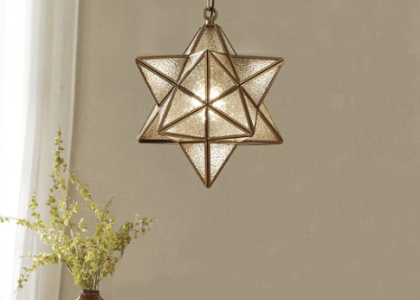Introduction
In modern society, the focus on sustainable living and environmental protection has led to many innovations in the field of renewable energy and recycling. One of the most exciting areas of development is upcycling, which refers to the practice of taking old or discarded objects and transforming them into something new and valuable. Upcycling has become increasingly popular in many industries, including fashion, furniture, and even lighting.
This article will discuss the innovation and beauty of upcycled lighting, exploring the benefits and challenges of using recycled materials to create unique and sustainable lighting solutions.
What is Upcycling?
Upcycling involves converting waste materials or unwanted items into something useful or aesthetically pleasing. The process of upcycling is similar to recycling, but with a key difference: rather than breaking down and remoulding the original material, upcycling involves transforming it into something new and better than its original form.
The practice of upcycling has become increasingly popular in recent years as people have become more aware of the environmental impact of waste and the importance of conserving resources. Upcycling is a creative and sustainable way to reduce waste, as it involves using existing materials to create something new and valued.
Upcycled Lighting
Upcycled lighting involves using discarded or second-hand materials to create unique and sustainable lighting fixtures. The possibilities for upcycled lighting are endless, as almost anything can be transformed into a lamp or light fixture.
For example, old bike parts, such as chains or rims, can be repurposed to create a striking industrial-style lamp. Wine bottles, jars, or old light bulbs can be transformed into pendant lights, while vintage cameras or film reels can be used to create avant-garde table lamps.
One of the benefits of upcycled lighting is that it is highly customizable, allowing individuals to create truly unique and personal lighting fixtures. Upcycled lighting is also highly sustainable, as it prevents waste and reduces the need for new resources.
The Benefits of Upcycled Lighting
There are many benefits to using upcycled lighting, both for individuals and the environment. Firstly, upcycled lighting is highly sustainable, as it involves using existing materials and preventing waste. This reduces the need for new resources and reduces the carbon footprint of lighting production.
Secondly, upcycled lighting is highly customizable, allowing individuals to create truly unique and one-of-a-kind lighting fixtures. This helps to add personality and character to a space, while also providing a sustainable and environmentally-friendly lighting solution.
Thirdly, upcycled lighting is often more affordable than new lighting fixtures, as it involves using discarded or second-hand materials. This makes upcycled lighting an accessible and inclusive option for those on a budget or with limited resources.
The Challenges of Upcycled Lighting
Despite the many benefits of upcycled lighting, there are also some challenges associated with the practice. One of the main challenges is the availability of materials. Upcycling often relies on using discarded or second-hand materials, which can be difficult to find in some areas.
Another challenge is the time and effort required to source and transform materials into a lighting fixture. Upcycling can be a labor-intensive process, which can be time-consuming and challenging for those with limited skills or resources.
Lastly, upcycling may not always provide the same level of quality and reliability as new lighting fixtures. While upcycled lighting can be visually stunning and highly sustainable, it may not always meet the same safety and performance standards as new lighting fixtures.




